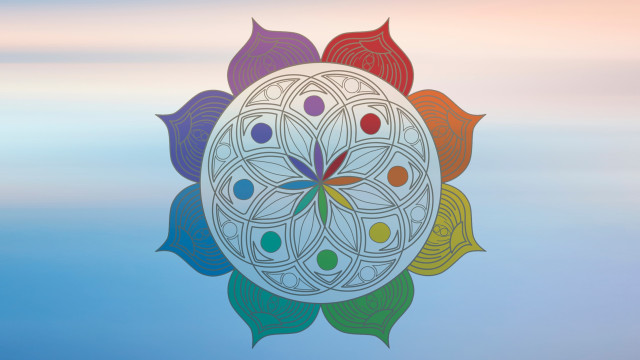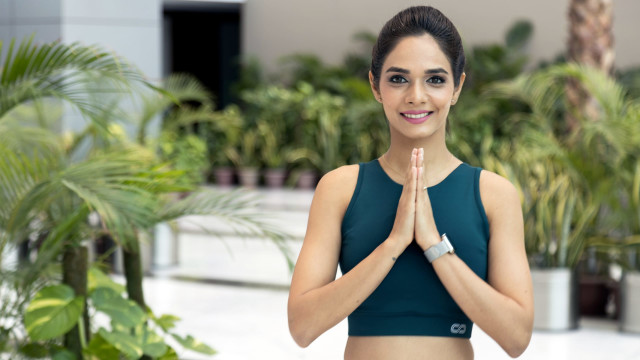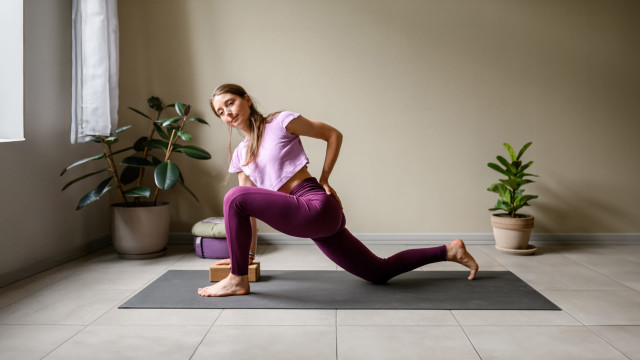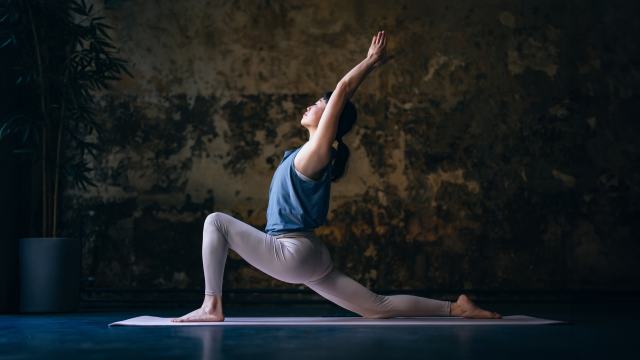Vinyasa Yoga for Beginners

Choosing a yoga practice can be challenging for beginners. From the gentle relaxation of yoga nidra to the intensity of hot yoga, no two styles are exactly the same. And while all yoga offers a series of benefits, vinyasa is one of the most popular. Here’s why.
What Is Vinyasa Yoga?
As a form of exercise, practicing yoga has been demonstrated to improve mobility, build endurance, and increase strength. One of the yoga practices particularly good for physical fitness is vinyasa.
Vinyasa is derived from two Sanskrit words: nyasa (to place) and vi (in a sacred way). Thus, vinyasa means to place something in a sacred way. In modern yoga, it refers to continuous flowing movement linked with breath. Vinyasa yoga is one of the most physically powerful practices where continual movements are coordinated with breath. With a repetitive, flowing sequence, vinyasa students often move through a series of scripted postures called sun salutations — inhaling and exhaling on queue.
Likely derived from practices dating back 5,000 years, modern vinyasa was created in India in the early 1900s by Krishnamacharya, known as the "father of modern yoga.” Krishnamacharya looked at vinayasa as a flow through poses, and as a way of flowing in the world as well, framing things in cycles with a beginning, middle, and end. Over the last five years, vinyasa yoga is one of the most searched yoga practices online worldwide.
And while vinyasa is a practice, the word “vinyasa” also refers to a sequence of yoga postures, which may be confusing to beginners. Yes, you can take a vinyasa class, but any combination of poses (or asanas) can be called a vinyasa — a kind of shorthand statement yoga teachers use. You may have heard of the eight limbs of yoga, and asana is one of them: Vinyasa is the linking of the poses. Today’s vinyasa practices string together a variety of sun salutations, introducing what we now consider a vinyasa flow.
Pro tip: Learn about the eight limbs of yoga in this course from teacher Shurjo Jha, Yoga’s 8-Step Path to Awakening.
If you are looking to build physical fitness through yoga, vinyasa can be a good choice. Practitioners don’t need to be in excellent physical condition, nor is flexibility a requirement. Yoga teachers can offer modifications on vinyasa yoga poses to accommodate a variety of students and challenges — in fact, chair yoga offers modified asanas for vinyasa yoga practitioners.
And contrary to what some think of yoga as a slow series of stretches done on a mat, vinyasa flow can be physically challenging for those who wish to treat yoga strictly as an exercise.
Pro-tip: Try these simple yoga postures, to get comfortable with the sequences found in vinyasa.
How Vinyasa Helps the Body
Yoga can help to invite in present-mindedness. During a vinyasa flow class, it’s hard to focus on anything but synchronizing your breath with movement. That concentration alone can be thought of as a moving meditation, bringing us into present-moment awareness. It’s this state of being in the now that yoga practitioners crave — it’s not uncommon to leave a challenging vinyasa yoga class feeling energized rather than depleted.
Emotionally, yoga has also been shown to cultivate calm and reduce stress. “Yoga helps us realize [that] emotions come and go,” says Shani Dayal in her course Yoga for Balancing Emotions. Through breathing exercises linked with motion, we can bring “steadiness in the body, calmness in the mind, and focus in the heart,” Dayal says. Practicing yoga influences the parasympathetic nervous system, which helps us feel calm and restored.
And while many think of yoga as a stress management tool — the simple act of slowing down and breathing with intention can create calming effects — yoga does way more than just promote calm.
Body aches can be alleviated through the movement of vinyasa. Studies show that gentle vinyasa yoga can help chronic back pain when practiced with modifications and attention to alignment. The American Osteopathic Association notes that yoga helps to increase flexibility, protects from injury, and builds muscle strength and tone. It also may help with hypertension by reducing blood pressure.
Notably, vinyasa yoga has benefits that help support overall health and strength, starting with your core. “The core is a place where we can tap into a deep reservoir of inner power,” says Leah Cullis, in her class Vinyasa Yoga: Core Strength. “This helps us stand upright and move more fluidly as we take steps both on and off the mat.”. As with any form of exercise, listen to your body and avoid any poses that are painful.
Starting and Maintaining Your Practice
If you’re a vinyasa yoga beginner, start small with a short flow class, which is designed to be approachable and give students a taste of a typical practice flow. Over time, you will build endurance and the ability to sustain a longer vinyasa flow practice.
Try different class environments — at home, in a virtual broadcast, or at a local studio with friends. You can experiment with basic building blocks of a yoga practice. And wherever you begin, set your own pace. Don’t worry about keeping up with neighboring yogis or practicing in perfect timing with a teacher’s instruction. It’s perfectly acceptable to find your breath and flow at a tempo that works best for you, following a pose or two behind.
Pro tip: Experiment going deeper with this strong and steady vinyasa yoga flow class.
Maintaining a yoga practice demands the same attention as any other habit-forming behavior — time plus repetition equals habit development. Set up a routine that is realistic for you. Aim to practice at a specific time each day, maybe first thing in the morning or as a midday refresh. Stay committed to getting back on track when you miss planned classes, and make sure to take breaks in between, giving your body time to rest and recover from the physical practice of a vinyasa flow class. Through gradual stages, a yoga practice is born.
In our modern, fast-paced world, it’s important to build healthy habits that are beneficial, and vinyasa yoga is a practice that pays dividends. Improved health, mental wellness, and flexibility — both on and off the mat — are all results a dedicated practitioner can experience. Treat your vinyasa yoga journey as an experiment, and soon you’ll find new pathways for building your overall wellness journey.
Key Takeaways:
- Yoga improves mobility, builds endurance, and increases strength.
- Vinyasa yoga is a physically powerful practice in which continual movements are coordinated with breath.
- Vinyasa yoga practice is accessible to students of all experience levels.









